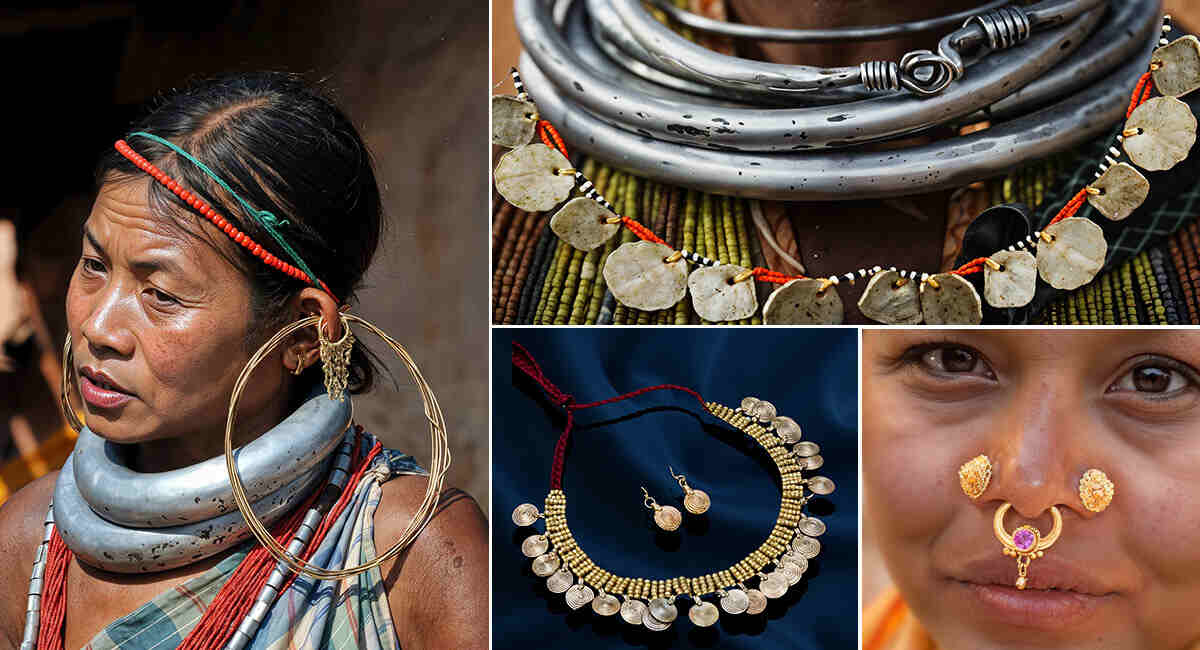Kandhei: The Classic Beauty of Tribal Jewelry and Accessories
In a world increasingly ruled by quick fashion and mass-produced accessories, there’s something intensely captivating about Indigenous cultures’ raw, rooted, and meaningful adornments. Kandhei, a term that refers to traditional tribal jewelry and accessories, is one such treasure trove of artistry. These pieces are not just ornaments—they are expressions of identity, symbols of heritage, and emblems of tribal spirituality and storytelling.
What is Kandhei?
Derived from tribal regions in India, especially Odisha and neighboring states, Kandhei represents handcrafted tribal jewelry that is both rustic and radiant. Artisans typically make Kandhei pieces from natural materials like brass, copper, beads, bones, shells, seeds, and threads, unlike contemporary jewelry crafted from precious metals and stones.
Each piece is more than decorative—it carries a cultural message. It could represent a rite of passage, a blessing for protection, or a status symbol within the tribe. These items are crafted with care and worn with pride.
The Origins and Cultural Significance
The roots of Kandhei jewelry lie deep within the traditions of tribal communities such as the Bonda, Santhal, Dongria Kondh, and Saora tribes of Eastern India. For these communities, jewelry is a part of life, not just a luxury for special occasions. From daily chores to ceremonial dances, tribal men and women proudly wear these accessories.
Symbols of Identity:
In many tribal cultures, jewelry functions as an identifier. It signifies the wearer’s tribe, marital status, or age. For example, Bonda women are known for their heavy layers of necklaces made of colorful beads, while Dongria Kondh women adorn their noses, ears, and necks with bold metallic accessories.
Spiritual Protection:
Many people believe Kandhei pieces possess protective powers. Amulets, talismans, and charms are commonly integrated into designs to ward off evil spirits, illness, or misfortune.
Artistry of Kandhei
What makes Kandhei so unique is the handcrafted essence of every item. Tribal artisans, many of whom inherit the craft from previous generations, use simple tools and age-old techniques to mold, twist, carve, and assemble the jewelry.
Materials Used:
- Metal: Brass, copper, and silver alloys are often used and shaped into bangles, earrings, and neckpieces.
- Beads and Shells: Sourced from nature, beads and shells add color and texture to the pieces.
- Wood and Bone: Particularly for necklaces and pendants, these materials lend a raw, earthy character.
- Threads and Fabric: Artisans use woven or braided materials to tie or support the main body of the jewelry.
Tools and Techniques:
- The artisans work with essential hand tools such as chisels, pliers, and anvils.
- Lost-wax casting, an ancient technique, is often used to make intricate metalwork.
- Each piece results from hours—sometimes days—of labor, patience, and vision.
Types of Kandhei Jewelry and Accessories
There is an astonishing variety within tribal jewelry, each piece with distinct meanings and uses. Here’s a look at some of the most prominent forms:
- Necklaces: Kandhei necklaces are vibrant and weighty, often long and layered. Beads, coins, and metal pendants form the core of these designs. Women do not just wear them—men, too, wear elaborate neckpieces during rituals and festivals.
- Earrings: Tribal earrings range from simple studs to enormous, spiral-shaped loops. Some tribes even practice ear-stretching to accommodate heavier pieces.
- Nose Rings and Nose Pins: In many tribal societies, a nose ring is more than an ornament—it’s a rite of passage. Young girls are often given their first nose pin during a cultural ceremony.
- Headgear and Forehead Accessories: Delicate yet intricate, these items include metal bands, chains with pendants that rest on the forehead, and even feathered or beaded hair accessories.
- Anklets and Toe Rings: These are not just for beauty—they also make rhythmic sounds during dances and rituals. Made from thick metal or braided materials, they add to the overall tribal aesthetic.
- Armlets and Bangles: From spiraled brass coils to stacked wooden bangles, Kandhei arm jewelry is bold and artistic.
How to Wear Kandhei Jewelry?
Kandhei pieces are bold and expressive, making them perfect statement accessories. Here are a few tips on how to rock them:
- Pair with solid colors: Let the jewelry shine by wearing it with simple, solid-colored outfits.
- Layer thoughtfully: Go for layered necklaces or bangles, but avoid over-accessorizing.
- Mix with modern pieces: Combine a tribal necklace with a chic blazer for a fashionable contrast.
- Highlight one piece: Choose one statement item—like an oversized earring or a bold headpiece—and let it steal the spotlight.
Preserving the Tradition
While the popularity of Kandhei is growing, it’s essential to ensure that it doesn’t get watered down by commercialization. Authentic tribal jewelry should be recognized, credited, and ethically sourced. Supporting tribal artisans directly or through fair-trade platforms is one way to keep the tradition alive and thriving.
A Legacy to Adorn and Protect
Kandhei is more than jewelry—it is a legacy of art, culture, and identity. Every piece asks us to see the beauty of Indigenous artistry while telling a story and preserving history. In embracing Kandhei, we don’t just enhance our wardrobe—we connect with a more prosperous world of meaning.
So, think beyond gold and diamonds next time you shop for accessories. Think Kandhei, where tradition meets timeless charm.


